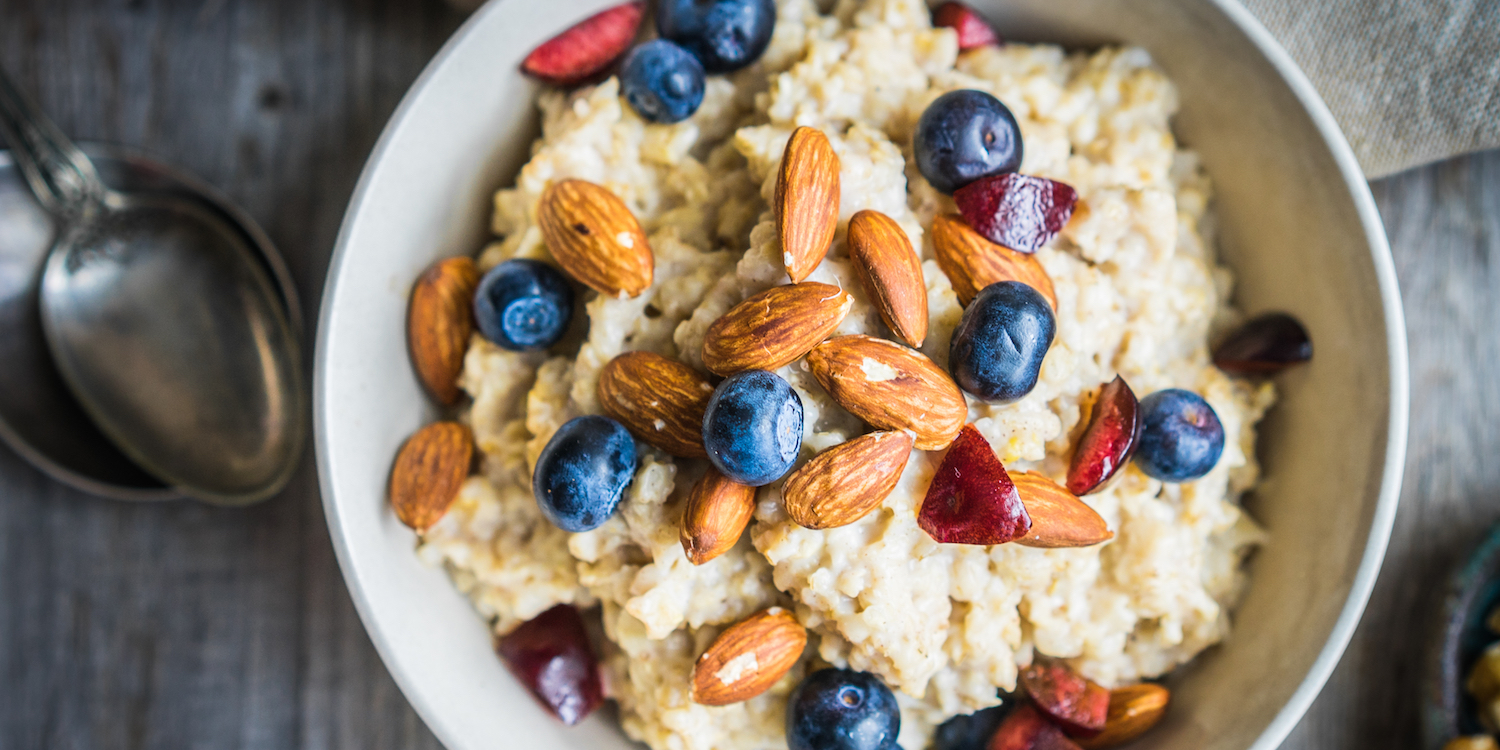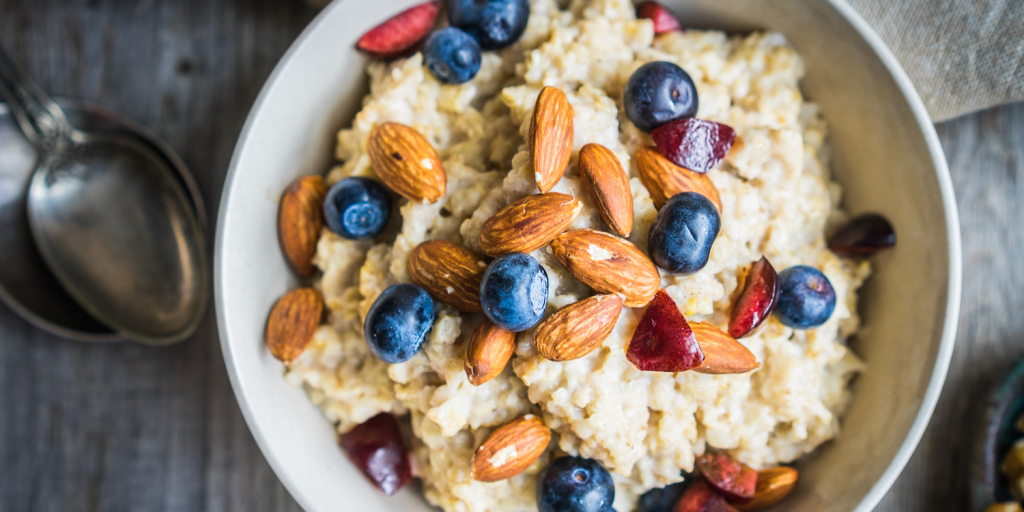
- If you have diabetes or are at risk, it's important to regulate blood sugar with a healthy diet.
- Healthy foods to help manage blood sugar include whole grains, nuts and seeds, and legumes.
- Olive oil and spices can bring additional health benefits for people with diabetes.
- Visit Insider's Health Reference library for more stories.
If you have diabetes, it's important to eat the right foods to maintain healthy blood sugar levels.
For example, eating healthy carbohydrates, foods high in fiber, and healthy fats can help prevent blood sugar spikes.
But eating high-carbohydrate foods that contain lots of sugar can make it more difficult to control your diabetes, says Deena Adimoolam, MD, an assistant professor of medicine, endocrinology, diabetes, and bone disease at the Icahn School of Medicine at Mount Sinai.
Here's which foods are best to eat if you want to lower blood sugar and keep it under control.
1. Go for whole grains
Eating whole grains, like brown rice, will have a less extreme impact on your blood sugar levels because they aren't digested as quickly, Adimoolam says. That's because whole grains have more fiber.
A 2018 review associated a higher intake of whole grains with a lower risk of Type 2 diabetes. Whole grains were also found to be beneficial in reducing diabetes risk factors like obesity and insulin resistance.
Examples of whole grains include:
- Barley
- Bulgur
- Buckwheat
2. Get plenty of fruits and vegetables
Fruits and vegetables are examples of healthy carbohydrates that are rich in fiber. For people with diabetes, doctors recommend eating five portions of fruits (two portions) and vegetables (three portions) a day to maintain healthy blood-sugar levels — though you should talk to your doctor to come up with a meal plan that best suits your needs.
Ripe fruits tend to have a higher glycemic index than less ripe fruits. The glycemic index ranks foods by how they raise glucose levels in the body. Foods high on the glycemic index raise glucose levels more quickly, potentially causing blood sugar spikes, while low-glycemic foods raise glucose levels more slowly.
Eating fruits with the skin can be more beneficial, Adimoolam says, since the skin contains more fiber and can help regulate your blood sugar.
Though all fruits supply nutrients, dried fruit and fruit juice have more concentrated sources of natural sugars. When possible, choose whole forms of fruit, such as fresh or frozen.
Adimoolam says most vegetables are healthy for people with diabetes, though starchy vegetables like potatoes, sweet potatoes, and plantains have a higher carbohydrate content and should be eaten in moderation.
Some examples of low-glycemic fruits and vegetables include:
- Apples
- Oranges
- Broccoli
3. Have oatmeal for breakfast
Oats are another good choice for people with diabetes because of their low glycemic index value and high fiber content.
A 2015 review found eating whole oats with at least 3 grams of soluble fiber daily can help Type 2 diabetes patients control blood glucose levels by increasing insulin sensitivity.
You should make sure to opt for steel-cut or rolled oats, as these varieties of oatmeal are less processed, which means they absorb into the bloodstream more slowly.
Try to avoid instant oatmeal with added sugar, and if you're mixing in fruit or other ingredients into your oatmeal, be mindful of their added sugar and total carbohydrate content.
4. Snack on nuts
Nuts are low-glycemic, high in fiber, and a healthy source of fat. They also contain beneficial nutrients and vitamins, like vitamin E, omega-3 fatty acids, and magnesium, which improve heart health and contribute to a balanced diet. They may also be especially helpful for people who want to control their blood sugar levels.
A small 2014 study had participants eat 15 grams of pistachios twice a day for 12 weeks. The participants had lower blood sugar levels as well as lower fasting glucose levels, and scientists concluded that eating pistachios daily was beneficial for glycemic control.
Because nuts are high in protein and healthy fats, snacking on them will help you feel fuller longer and avoid spikes in blood sugar.
Some healthy nuts for people with diabetes include:
- Walnuts
- Almonds
- Cashews
- Peanuts
- Pistachios
5. Cook with garlic
There is evidence to suggest that garlic can help control blood sugar. That's because some compounds in garlic — including allyl propyl disulfide and S-allyl cysteine sulfoxide — can help increase insulin sensitivity.
For example, a 2017 study found that consuming between 0.05 to 1.5 grams of garlic (from supplements) a day was associated with reduced blood glucose levels in Type 2 diabetes patients.
Try spicing your foods with garlic powder or adding some crushed-up garlic cloves when you're cooking. You should consult your doctor, however, if you plan to consume lots of garlic, since it can also contribute to gas, nausea, and heartburn (plus, bad breath). Garlic may also be dangerous for people on blood thinners.
6. Dress your meals with extra virgin olive oil
Extra-virgin olive oil can be a powerful addition to meals. Here's why:
- Helps reduce the effect of eating high-glycemic foods: A 2016 study found that the addition of extra-virgin olive oil to a high-glycemic meal "blunts" the blood glucose response after the meal for people with Type 1 diabetes, helping to stabilize blood sugars and prevent fluctuations.
- Reduces the risk of Type 2 diabetes: A 2017 review of studies found that eating olive oil may help manage and prevent Type 2 diabetes.
Olive oil is also rich in healthy fats and antioxidants that help reduce inflammation and risk of heart disease.
7. Add legumes to your meals
Beans, lentils, and peas make a high-fiber, high-protein addition to your diet. Legumes are also a very low-glycemic food, helping to prevent blood sugar and insulin spikes.
They have been shown to decrease blood pressure and lower LDL cholesterol levels. And, In one small 2014 study, participants with Type 2 diabetes who replaced red meat for legumes in their diets for eight weeks had decreased blood glucose, insulin, and LDL cholesterol compared to those not on a legume-based diet.
Working legumes into your diet, especially if you're adhering to a Mediterranean diet, can also help bolster your cardiovascular health, provide antioxidants, and is associated with a lower risk of developing Type 2 diabetes.
8. Add soy to your diet
Soy products, like tofu, are a plant-based source of protein that may have a preventative effect against Type 2 diabetes. Soy contains isoflavones, a plant compound with antioxidant and anti-inflammatory properties. Scientists say these isoflavones seem to play a role in diabetes prevention.
2018 research connected soy consumption with a lowered risk of Type 2 diabetes
And, a 2021 study also found that adequate soy intake may reduce the risk of gestational diabetes.
Additionally, a small study published in 2015 found that people with Type 2 diabetes who ate 60 grams of soy nuts daily for eight weeks saw an improvement in glycemic control and insulin resistance.
One in three adults with diabetes has chronic kidney disease. Soy might have specific benefits for people with these conditions. A 2021 review stated that soy isoflavones may improve kidney disease by decreasing protein in the urine.
9. Use herbs and spices
Scientists have identified a number of herbs and spices — basil, sage, bay leaves, allspice, black pepper, and cardamom, to name a few — that contain compounds that may lower high blood sugar, reduce fats in the blood, and regulate insulin.
A few specific examples include:
- Ginger: A 2016 study showed that ginger supplements lowered blood sugar, among other markers, and could help reduce the risk of future complications from diabetes.
- Cumin: Curcumin, a compound present in spices like cumin, may have protective effects on the kidneys, according to research in mice.
- Turmeric: Though more research is needed, some research shows that turmeric may help manage high blood sugar levels and improve insulin resistance.
More science is needed to understand how these herbs and spices may specifically affect diabetes, but they are a safe addition to your cooking. And some, like turmeric, may provide other benefits, including fighting inflammation and helping to prevent cancer.
10. Drink green tea
According to a 2013 meta-analysis of 17 randomized controlled trials, green tea has positive effects on diabetes symptoms. It was shown to decrease levels of fasting insulin, fasting glucose, and blood sugar levels.
Green tea has long been touted for its benefits on brain and heart health. It can also help your body burn fat and calories, aiding in weight loss, which may improve outcomes for people with Type 2 diabetes, though the research is not conclusive.
11. Work in fermented foods
A 2018 review of animal and human studies concluded that fermented foods such as kimchi, kefir, black garlic, and fermented soybeans may have favorable effects on people with diabetes.
In particular, scientists pointed out that these foods have the potential to help prevent complications associated with diabetes, such as heart disease and Alzheimer's disease, by increasing antioxidant intake and fighting inflammation.
Probiotic foods are known for containing bacteria that support a healthy gut microbiome. Unbalanced gut microbiomes have been linked to impaired blood glucose control and the development of Type 2 diabetes.
In fact, scientists are still studying the effects that particular bacteria in the gut may have on the development and treatment of diabetes.
12. Eat more chia seeds
Chia may help reduce blood glucose levels by converting the glucose into complex carbs, which also helps you feel fuller for longer.
Chia seeds are high in beneficial fiber and healthy fats. They have been shown to reduce systolic blood pressure in people with Type 2 diabetes. They are also a beneficial addition to your diet to help prevent obesity and promote weight loss while also keeping glycemic control balanced.
Insider's takeaway
Foods that contain fiber, protein, and healthy fats are better for lowering blood sugar and managing diabetes when compared with foods high in fast-acting carbohydrates, such as those high in added sugars and refined grains.
The glycemic index can be a helpful measurement to determine which foods to eat, but it's important to remember that everyone reacts to foods differently.
"Some foods considered as low glycemic index foods could potentially cause a spike in one's blood sugar quicker than it would another person," Adimoolam says. Blood sugar levels can also depend on other factors, including what medications a person is taking and what else the person is pairing with the specific food.
If you have diabetes or may be at risk, you should consult your doctor to determine what the right diet is for you. For more information, you can read about the best diets for diabetes, and the best snacks for diabetics.
